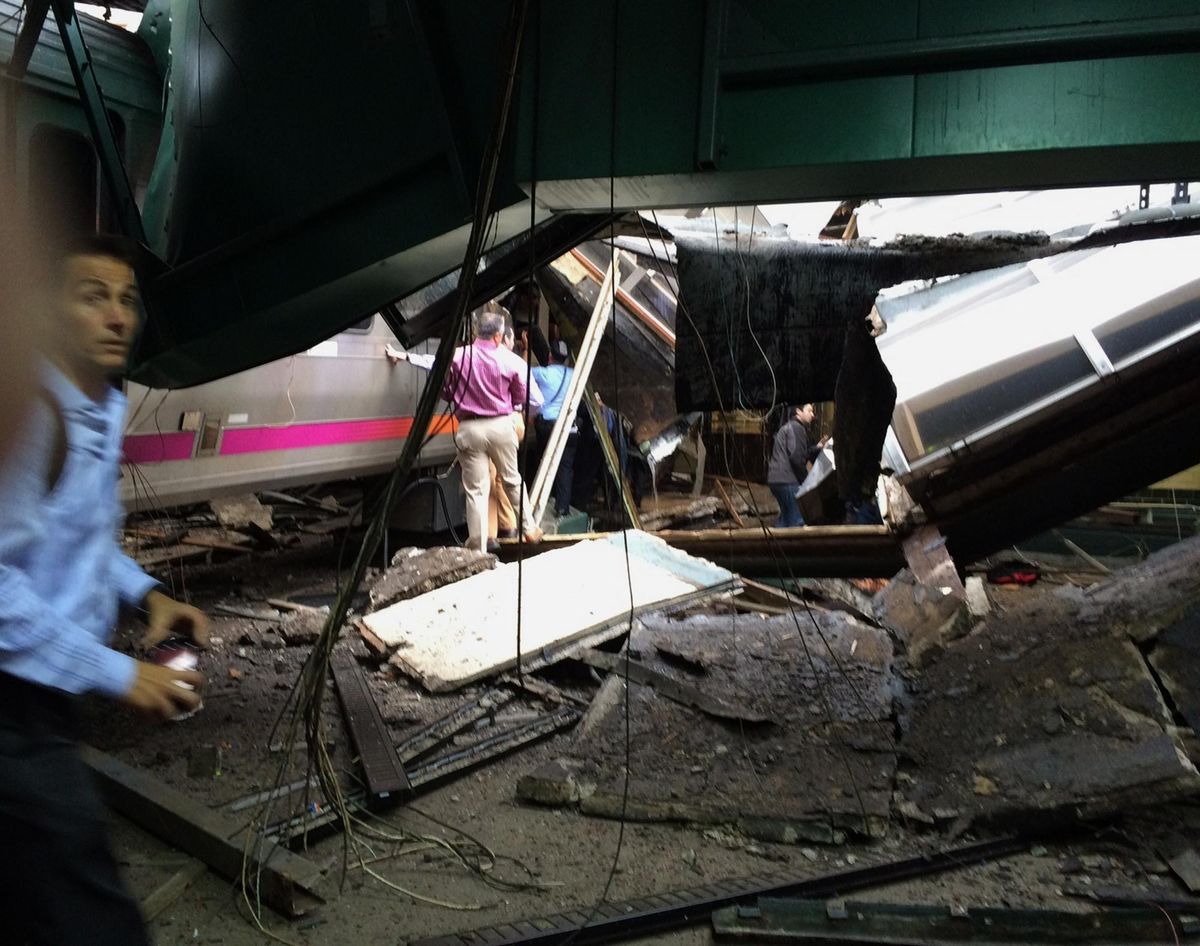NTSB has yet to interview injured engineer in deadly crash

HOBOKEN, N.J. – National Transportation Safety Board investigators held off questioning the engineer in the deadly Hoboken train crash because of his injuries Friday and struggled to lift clues from the train’s black box recorders.
Authorities want to know why the NJ Transit commuter train with engineer Thomas Gallagher at the controls smashed through a steel-and-concrete bumper and hurtled into the station’s waiting area Thursday morning. A woman on the platform was killed, and more than 100 others were injured.
NTSB vice chair T. Bella Dinh-Zarr said the board, the lead agency in the investigation, has been “in touch” with the injured Gallagher but has yet to interview him. She said blood and urine were taken from him and sent for testing, standard procedure in train accidents.
However, a government official said that investigators from one of the other agencies taking part in the probe interviewed Gallagher three times Friday. The official, who was not authorized to discuss the case and spoke on condition of anonymity, would not disclose what Gallagher said but described him as cooperative.
Meanwhile, the NTSB retrieved the event recorder that was in the locomotive at the rear of the train but hasn’t been able to download its data and has gone to the manufacturer for help, Dinh-Zarr said. The event recorder contains speed and braking information.
The NTSB also hasn’t been able to extract a recorder from the forward-facing video camera in the train’s mangled first car, Dinh-Zarr said. She said the wreckage cannot be safely entered yet because it is under a collapsed section of the station’s roof.
Investigators were also reviewing security video from the station, setting out to inspect the nearby tracks, and gathering records on the crew members’ training, scheduling and health, Dinh-Zarr said.
The engineer, conductor and brakeman “have been very cooperative,” she said.
Gallagher, 48, a NJ Transit engineer for about 18 years, was pulled from the wreckage, treated at a hospital and released.
“The one thing we know for sure is that the train came into the station too fast. Why that is, we don’t know,” New Jersey Gov. Chris Christie said. “Was it error by the engineer? Did he have some type of medical emergency or circumstance that rendered him unable to control the train? Was there some equipment failure that didn’t allow him to slow down?”
Gallagher’s union, the Brotherhood of Locomotive Engineers and Trainmen, said it could not comment because it is taking part in the investigation. The other parties to the investigation are the Federal Railroad Administration, NJ Transit and two other railroad unions.
Witnesses said they did not hear or feel the brakes being applied before the crash. Authorities would not estimate how fast the train was going before it hit the bumper at the end of its track. But the speed limit into the station is 10 mph.
Bumpers are meant mainly to denote the end of a track, not to stop a fast-moving train, said David B. Clarke, who runs the Center for Transportation Research at the University of Tennessee, Knoxville.
Some bumpers are designed to absorb the impact if a slow-moving car gets loose, but the maximum speed one can handle can be as low as 5 mph in some cases, he said. Trains are supposed to stop well clear of bumpers, Clarke said.
Falling debris from the crash killed 34-year-old Fabiola Bittar de Kroon, who had just dropped her toddler daughter off at day care before rushing to catch a train. Sixteen of the injured remained hospitalized, two in intensive care.
More than 100,000 people use NJ Transit to commute from New Jersey to New York City each day. The NJ Transit portion of the Hoboken station remained closed Friday, slowing the morning commute.
The wreck has raised questions of whether technology called positive train control would have made a difference if NJ Transit had installed it. The GPS-based system is designed to prevent accidents by automatically slowing or stopping trains that are going too fast.
Railroads are under government orders to install positive train control by the end of 2018. The deadline has been repeatedly extended at the industry’s request.